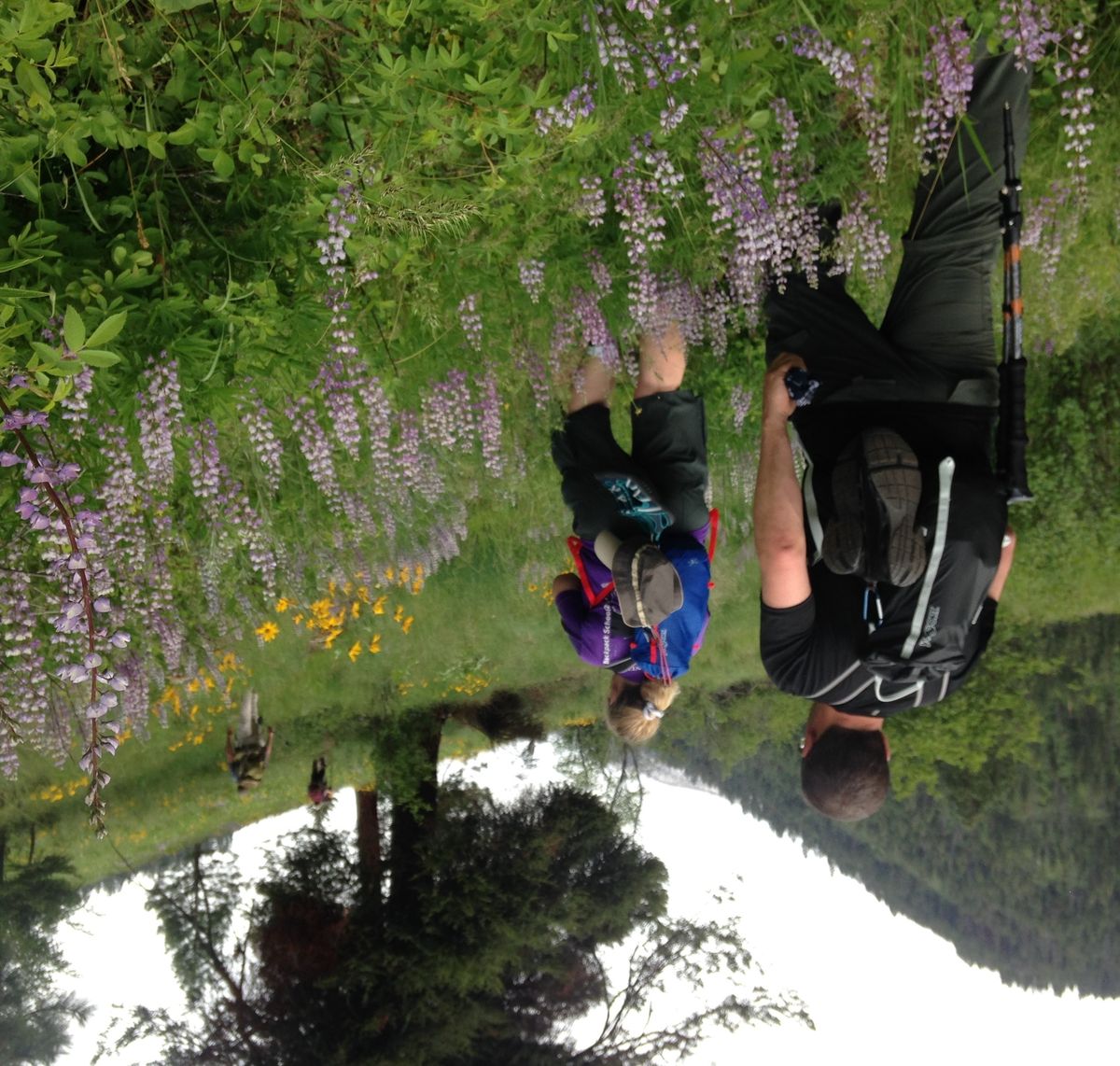Backpacker graduates with flying bear bag

This is the last in a series of four stories from a fledging backpacker’s perspective as he learns what it takes to be a mountaineer.
I hope backpacking class isn’t graded on a curve, because I flunked the first test.
I left my fly open, and everybody knew it.
Embarrassed by the stares of teachers and classmates, I did the only thing I could: I covered my shame.
With one quick motion, I grabbed the zipper and closed the flap on my tent.
But I was too late. My quarter-dome had already been violated by a giant orange-and-black woolly caterpillar that looked ready to nest in my sleeping bag.
Or worse, my wife’s.
Memorial Day weekend in the mountains of central Idaho doubled as graduation weekend for about 20 students of the Spokane Mountaineers Backpack School. It was a practicum on everything we were supposed to learn during seven weeks of class, including cooking, cleaning, water-purifying and bear-bagging.
That sounds scarier than it is. The bear bag is a rugged sack designed to keep food safe and critters out of your tent, and you do that by hanging it from a tree.
First, tie one end of a long rope to your bag and the other end to a 3-pound rock. Then you make like David and sling that rock over a sturdy branch that’s at least 15 feet high. After you miss five or six times, you find a smaller rock and try again, telling yourself that no grizzly bear is going to nibble your dehydrated Chicken a la King.
After my bag was safely hung, I was informed that chipmunks are the biggest threat to my food supply. But then, “chipmunk bag” won’t sound impressive when I tell this tale to my grandkids.
Truth be told, my encounters with nature weren’t all that close. Shortly into our first hike, our group of three men and two women encountered a 4-foot-long rattlesnake, with a rattle the size of a bumble bee.
Ten years from now, that rattler will probably be 12 feet long and his fangs will be the size of a rabid Rottweiler’s, but for now he looked like a big noodle in the grass.
In fact, we couldn’t even hear his rattler over the rushing water, which was just an excuse for the guys to get closer.
The women shrieked while the men moved within striking distance – the snake’s striking distance, that is. I got within 6 feet before common sense took over. In other words, my lousy iPhone camera wasn’t going to get a decent shot unless I got within 18 inches.
With dinner safely stored, it was time to relax and pull out our chairs. I cursed their weight as I carried a 42-pound pack over a 4 ½-mile, 1,000-foot elevation gain, but they were worth every ounce – especially on our 27th wedding anniversary.
“Thank you,” said my wife, Dannette, as she nursed a sore knee while I rustled up some grub from the bear bag.
The next day, we had the choice of four hikes. Reassured that the Spokane Mountaineers weren’t grading on a curve, I opted for the shortest – a 4-mile round trip to scenic meadows, flowing streams … and a black bear.
Our teachers, Greg Ropp and Samantha Journot, spotted him first, and urged us to move up, quietly. I doubled my pace and was rewarded by a speck of black about 100 yards away, sitting under a tree.
The bigger reward: incredible scenery at every turn, to be shared with new friends. At that point I realized I was also sharing my own delicious fragrance, and that if I still wanted to be their friends, I would need to do something about it.
I considered the aptly named Rapid River, chilled by mountain runoff, and immersed myself for less than a minute.
The more intrepid backpackers trekked halfway to Oregon, returning at almost dusk with tales of snowfields and elk herds. Someday, I tell myself.
Back at camp, I still waited for more tests. My 13 essentials were stowed in my sack, ready to be counted. No such luck, but Dannette was cooking dinner.
That’s when it hit me: The 14th essential is a good partner.